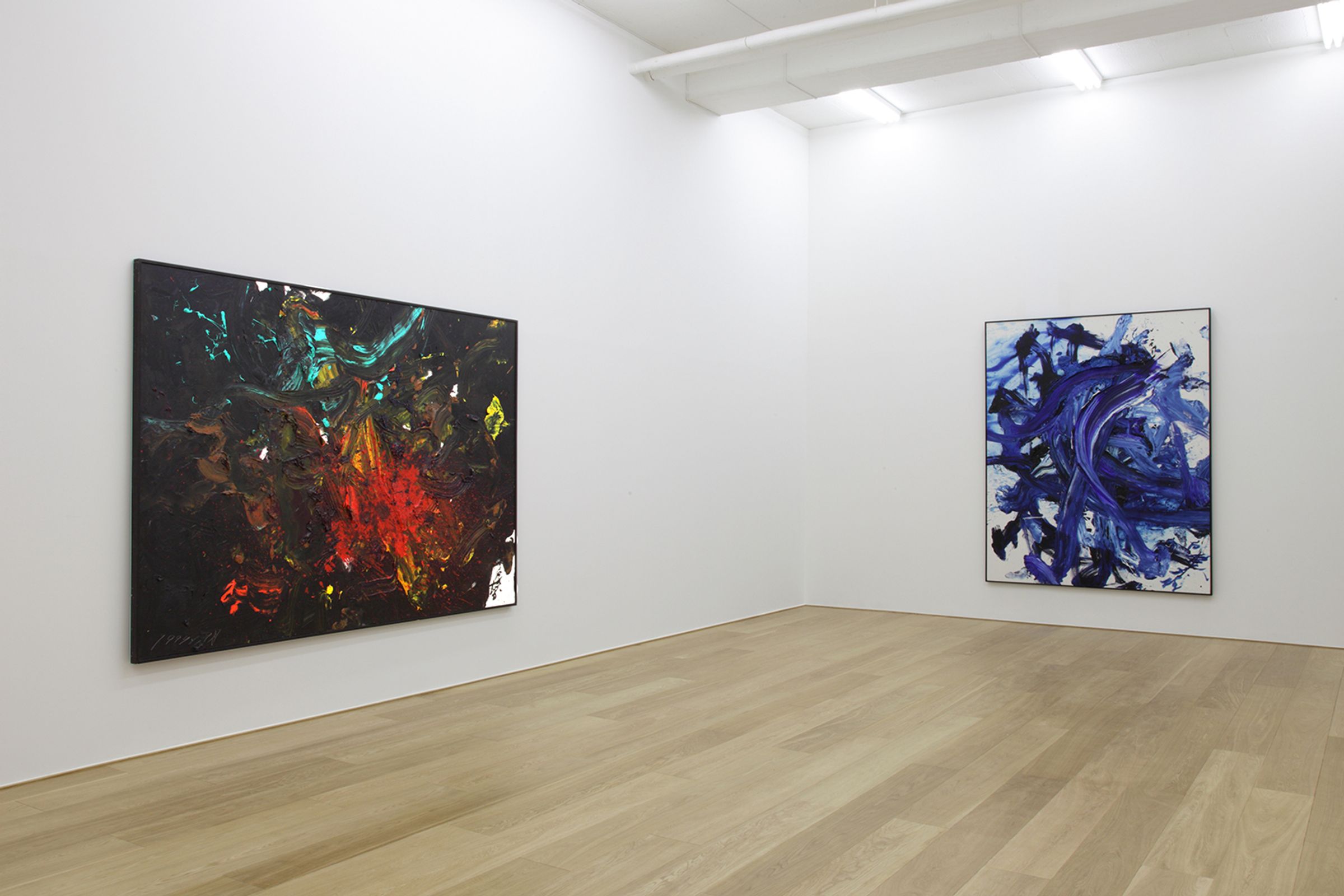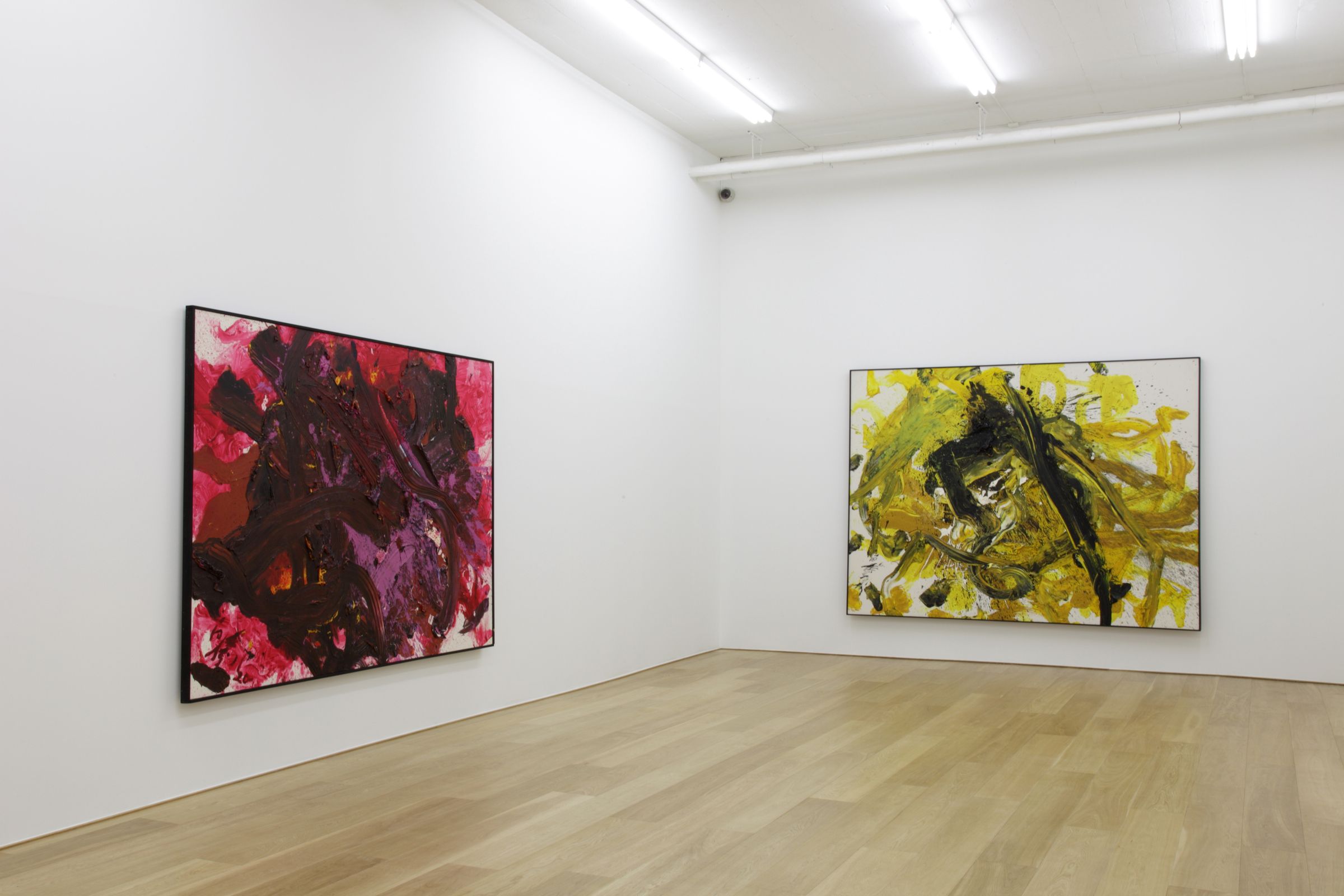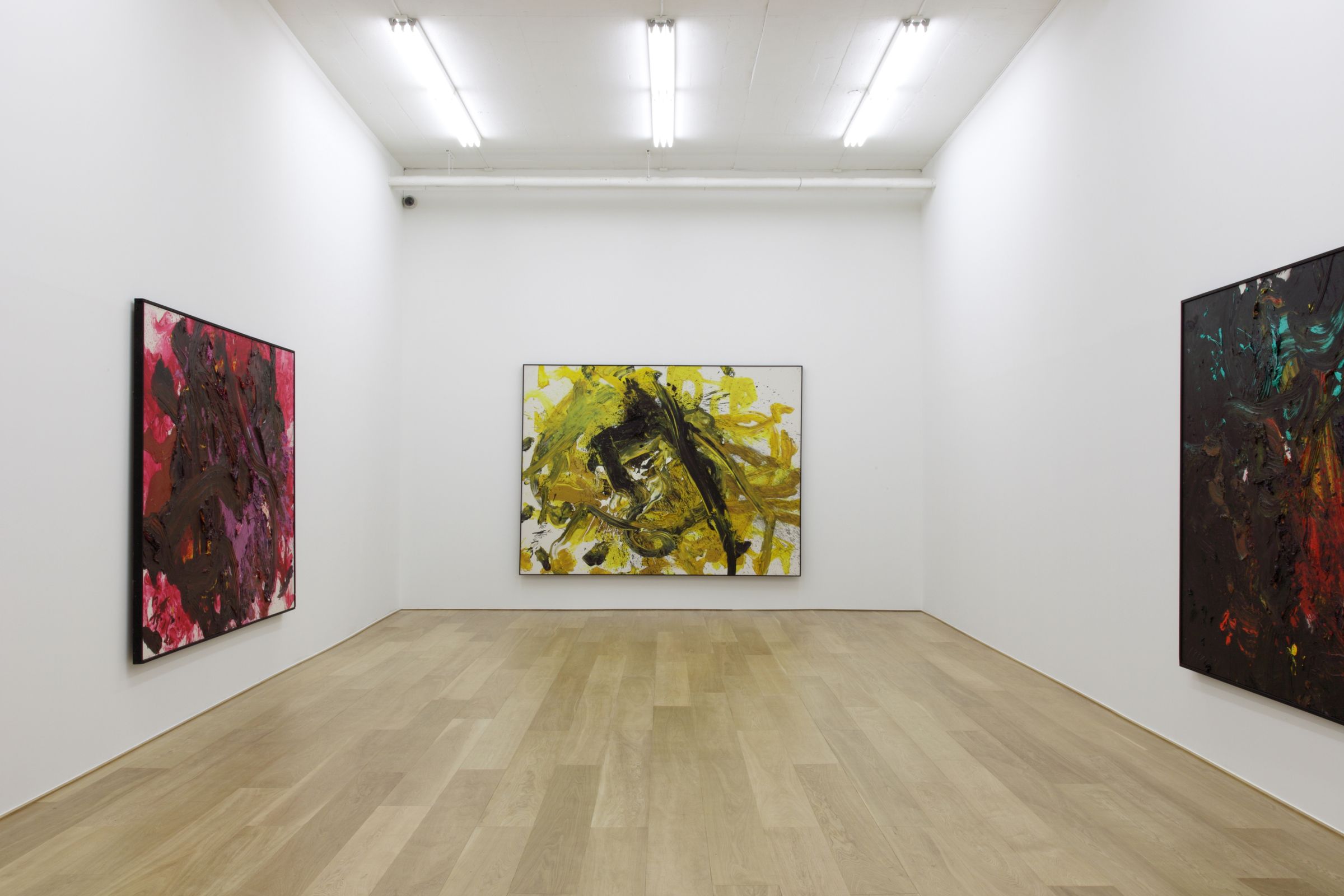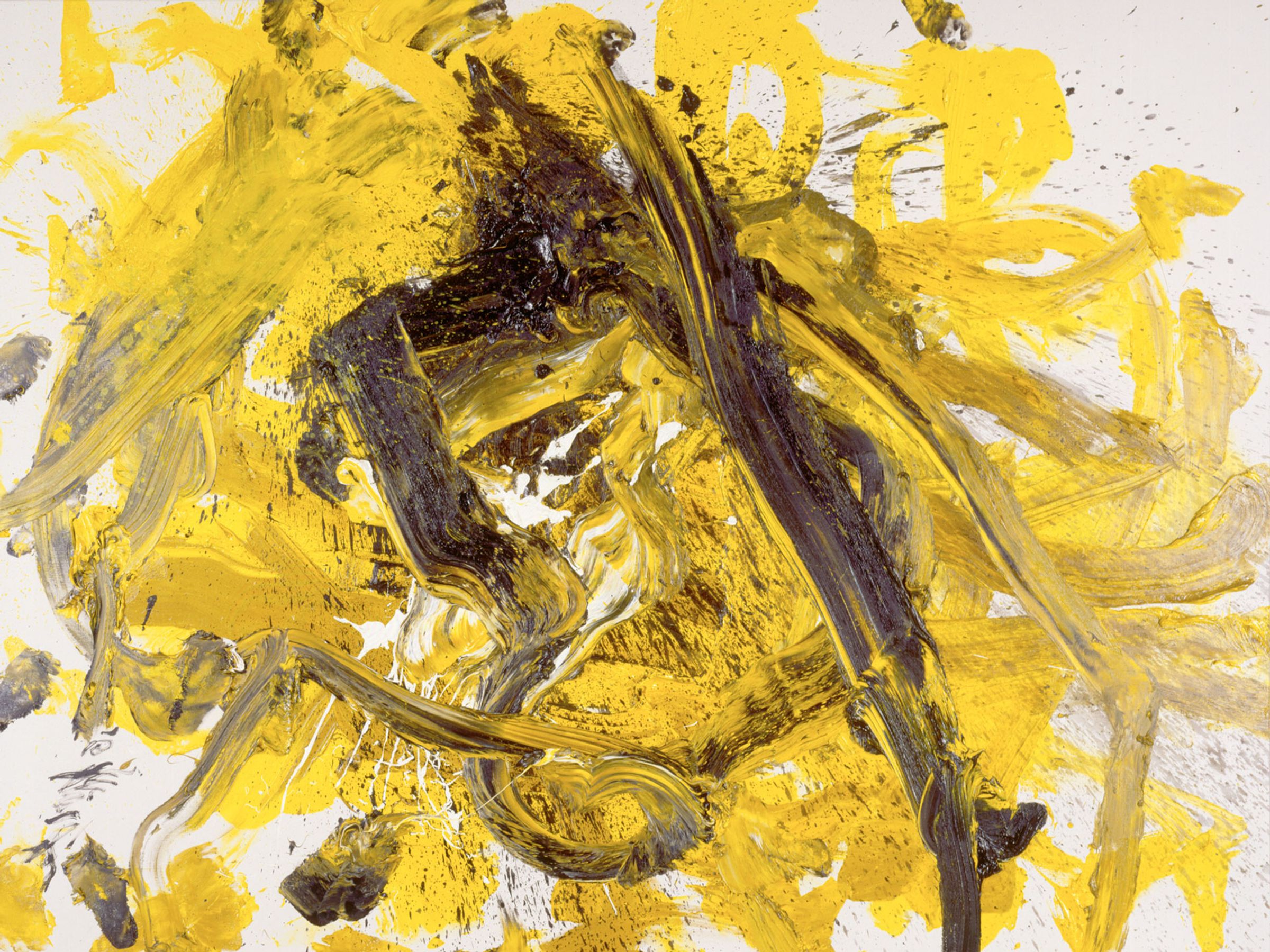
Kazuo Shiraga
Paintings
January 23, 2010 – February 27, 2010
The first exhibition in 2010 presents paintings by the Japanese artist Kazuo Shiraga (1924-2008). Shiraga’s art has, for a significant amount of time, received little art historical attention in the western world; this it is the first time Shiraga’s works are exhibited in Norway. The paintings on display in Peder Lund’s locales from January 23rd through February 27th, presents its audience with an unique insight into Shiraga’s artistic enterprise, which, through new scholarly discoveries, is revealed to have had a larger impact on, amongst others, the American Abstract Expressionists, than previously assumed.
In 1973, Shiraga said in an interview that he wished to make paintings that lack all composition: “[…] I wanted to create paintings with no composition or no sense of colors, no nothing. […] I wanted to make a painting that was like a sea cucumber. A painting as slippery, as uncatchable as a sea cucumber or konnyaku jelly, or a jellyfish. A painting with no center, no pyramid composition, no L-shape composition. A paint- ing with no sense of color.” What this amounts to is a desire to break entirely with earlier strategies of painting. In Western painting there are long traditions of compositional devices, such as those used to create depth, illusion, unity, balance or symmetry. In Shiraga’s pictures we see no respect for these traditions. He works with oil paint, a Western medium, but disregards its traditions. In some of his pictures, such as Kōsha og Kaimei, we see an inclination towards a centring of the paint strokes. At the beginning of his career, Shiraga often painted pictures of monochrome red. All the pictures exhibited here at Peder Lund are based on a single dominant colour.
Works
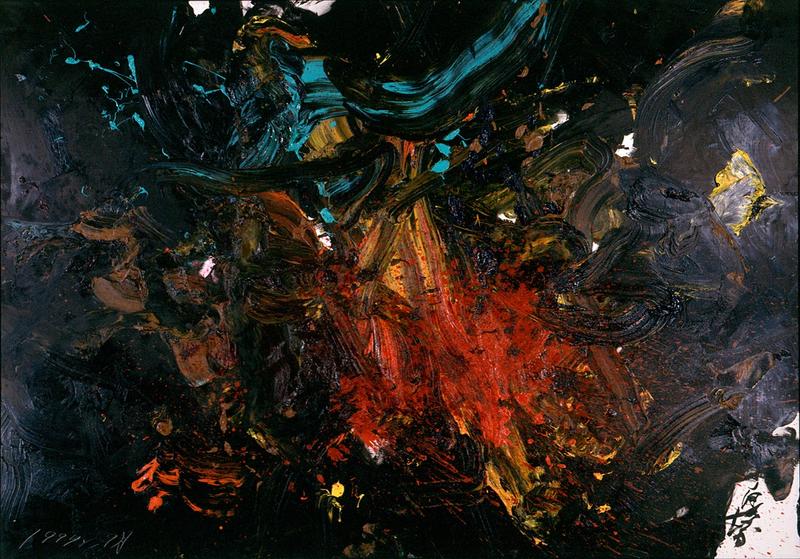
Hika, 1999
Kazuo Shiraga
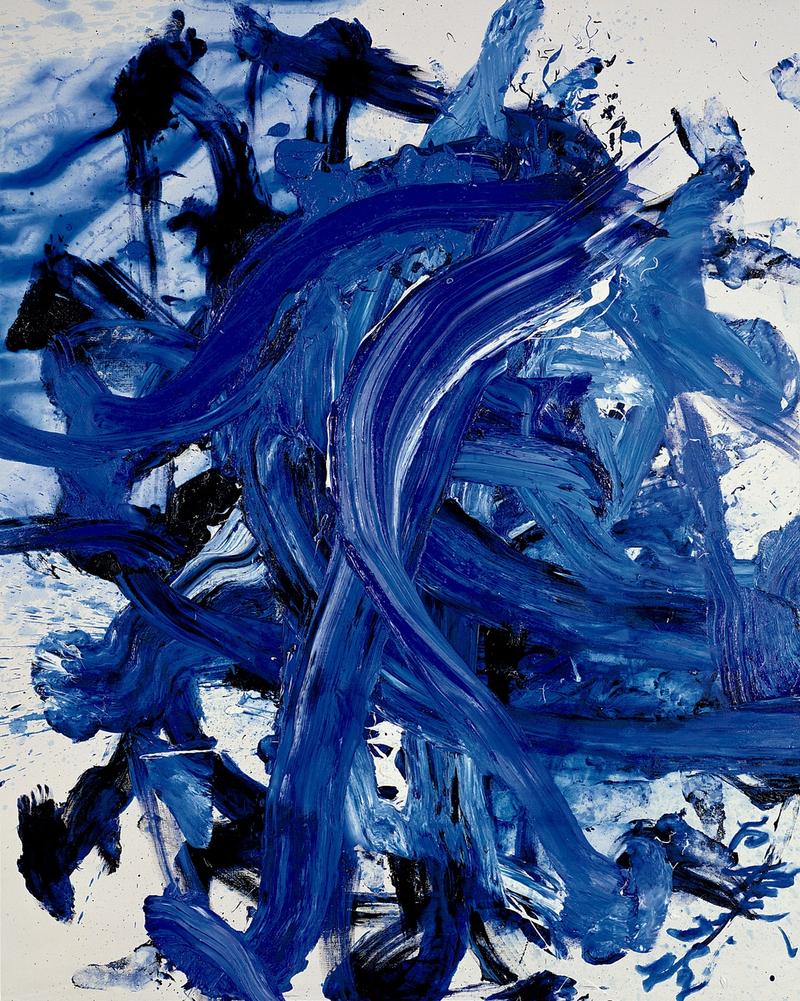
Kaimei, 1994
Kazuo Shiraga
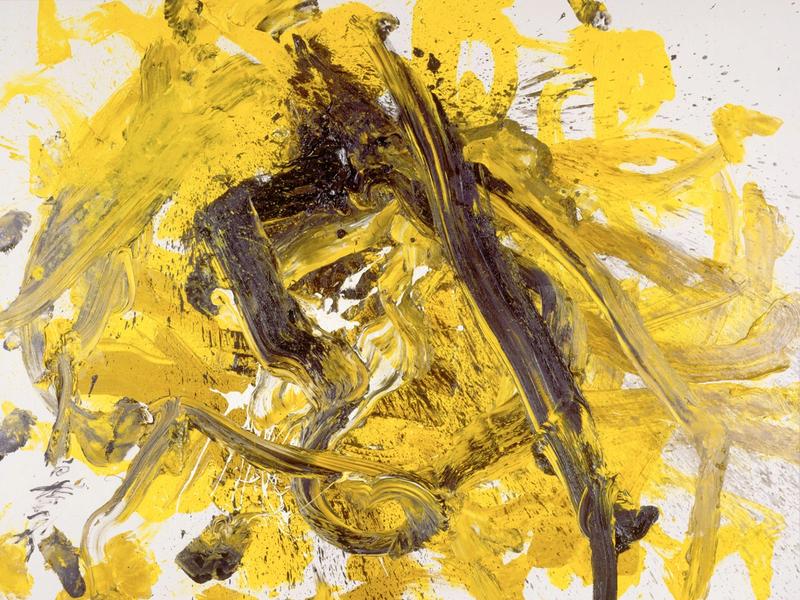
Kōsha, 1992
Kazuo Shiraga
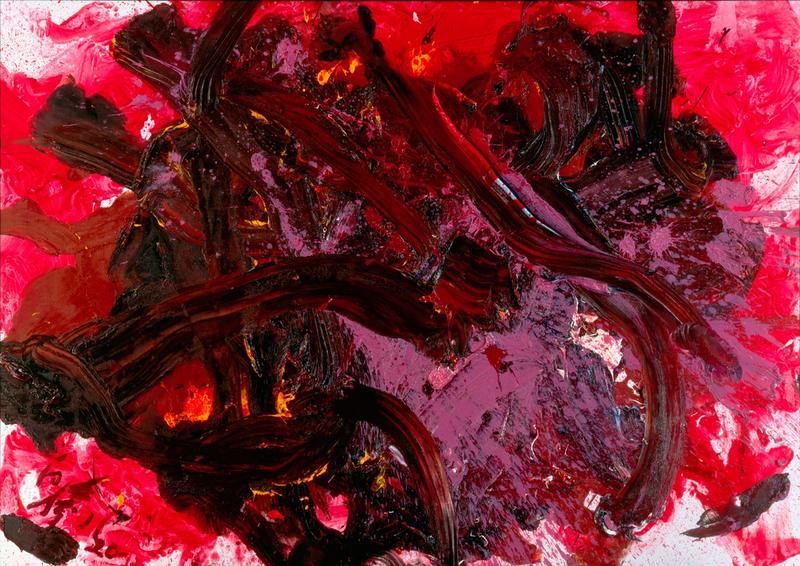
Saigō, 2000
Kazuo Shiraga
